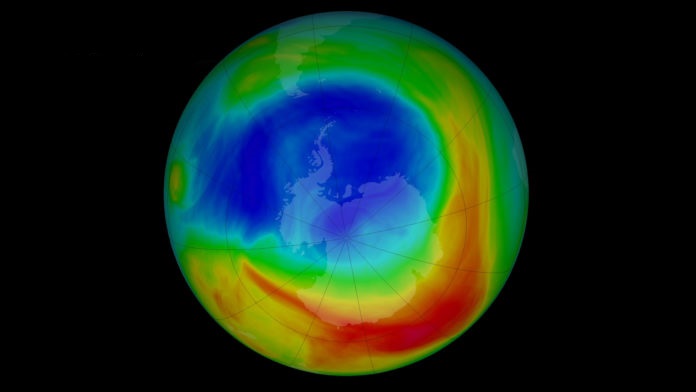
Experts Say The Earth’s Ozone Layer Continues To Recover
- Thomas Nelson
- December 14, 2020
- News
- 0 Comments
If you’re reading this right now, you have something to be grateful for: a healthy ozone layer around our planet. The ozone layer is a region of the Earth’s stratosphere that absorbs the majority of our star’s ultraviolet radiation. And good news for us: the ozone layer continues to recover following the discovery of a hole caused by ozone depletion.
If we didn’t have the ozone layer, all of the sun’s radiation would reach the surface of our planet, damaging the DNA of most surface-dwelling life and killing plants within a matter of days. Think of it like the worst sunburn anyone has ever had, but covering the entire planet.
In 1985, a hole in the ozone layer was discovered by scientists. The ozone hole developed because of human-created chemicals called Ozone Depleting Substances, or ODS. These substances include CFCs, HCFCs, and halons. CFCs are the primary culprit.
When CFCs are exposed to ultraviolet light, the gases dissociate, releasing atoms of chlorine which are known to catalyze the destruction of ozone.
On September 16th, 1987, an international treaty designed to protect the ozone layer by phasing out ODS called the Montreal Protocol was agreed upon and went into effect on January 1, 1989.
Fortunately in 2019, NASA scientists announced that the hole in our ozone layer had shrunk to its smallest size since it was discovered. The recovery was made possible through global cooperation and adherence to the Montreal Protocol.
A new study, published March 25th, 2020 has confirmed what NASA announced last year – that the ozone layer was indeed recovering.
“This study adds to growing evidence showing the profound effectiveness of the Montreal Protocol,” said Antara Banerjee, a CIRES Visiting Fellow at the University of Colorado Boulder who works in the Chemical Sciences Division of the National Oceanic and Atmospheric Administration. “Not only has the treaty spurred healing of the ozone layer, it’s also driving recent changes in Southern Hemisphere air circulation patterns.”
Banerjee added: “The challenge in this study was proving our hypothesis that ozone recovery is in fact driving these atmospheric circulation changes and it isn’t just a coincidence.”
But Banerjee is quick to note that just because the ozone layer is recovering doesn’t mean we’re out of the woods as far as atmospheric health goes. Humanity continues to release countless tons of greenhouse gases into the atmosphere which can determine the direction like on Earth goes.
“It’s the tug of war between the opposing effects of ozone recovery and rising greenhouse gases that will determine future trends,” says Banerjee.
As of December 2020, it’s estimated that 2020 will have the 12th largest ozone hole on record. Scientists have recorded the size of the ozone hole for 33 years. Scientists note that the size of the ozone hole can be easily impacted by the climate. 2019’s climate was favorable for shrinking the hole on the ozone layer – 2020’s was less favorable.
In order for the ozone layer to continue to recover, and for it to even matter, we need to continue to reduce our carbon footprint and stave off the worst impacts of anthropocentric climate change before it’s too late.
Related post: Bumblebees Could Be Extinct Within Our Liftime

